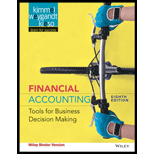
Concept explainers
Product life cycle:
Every corporation in its operational life cycle has to pass through various phases known as “Product life cycle”. There are various stages of product life cycle like introductory phase, Growth phase, maturity phase and decline phase.
Introductory phase:
In this stage, there will be negative
Growth phase:
In this stage, the company generates certain amount of cash for running the business operations. In this stage, the net income will be higher than the cash flow from operating activities.
Maturity phase:
In this stage, the volume of sales will be at its highest peak. In this stage, net income and cash flow from operating activities will be almost similar. The cash flow from operating activities will be higher. Therefore the company will plan to pay dividends to its shareholders’ or redeem a debt or even plan for buyback of its stock.
Decline phase:
In this stage, the profits and volume of sales starts to decline or decrease. The cash flow from operating activities also decreases. Therefore the cash flow from financing activities might be negative as it pays for dividend and buy back of stock. But cash flow from investing activities might be positive as the company would try to increase its
To state: the present stage of product life cycle A Incorporation.
Want to see the full answer?
Check out a sample textbook solution
Chapter 12 Solutions
Financial Accounting 8th Edition
- One company might depreciate a new computer over three years while another company might depreciate the same model computer over five years...and both companies are right. True Falsearrow_forwardno chatgpAccumulated Depreciation will appear as a deduction within the section of the balance sheet labeled as Property, Plant and Equipment. True Falsearrow_forwardNo ai Depreciation Expense is shown on the income statement in order to achieve accounting's matching principle. True Falsearrow_forward
- no aiOne company might depreciate a new computer over three years while another company might depreciate the same model computer over five years...and both companies are right. True Falsearrow_forwardno ai An asset's useful life is the same as its physical life? True Falsearrow_forwardno ai Depreciation Expense reflects an allocation of an asset's original cost rather than an allocation based on the economic value that is being consumed. True Falsearrow_forward
- The purpose of depreciation is to have the balance sheet report the current value of an asset. True Falsearrow_forwardDepreciation Expense shown on a company's income statement must be the same amount as the depreciation expense on the company's income tax return. True Falsearrow_forwardDont use AI Give soln.arrow_forward
 Intermediate Accounting: Reporting And AnalysisAccountingISBN:9781337788281Author:James M. Wahlen, Jefferson P. Jones, Donald PagachPublisher:Cengage LearningPrinciples of Accounting Volume 1AccountingISBN:9781947172685Author:OpenStaxPublisher:OpenStax College
Intermediate Accounting: Reporting And AnalysisAccountingISBN:9781337788281Author:James M. Wahlen, Jefferson P. Jones, Donald PagachPublisher:Cengage LearningPrinciples of Accounting Volume 1AccountingISBN:9781947172685Author:OpenStaxPublisher:OpenStax College Cornerstones of Financial AccountingAccountingISBN:9781337690881Author:Jay Rich, Jeff JonesPublisher:Cengage LearningPrinciples of Accounting Volume 2AccountingISBN:9781947172609Author:OpenStaxPublisher:OpenStax College
Cornerstones of Financial AccountingAccountingISBN:9781337690881Author:Jay Rich, Jeff JonesPublisher:Cengage LearningPrinciples of Accounting Volume 2AccountingISBN:9781947172609Author:OpenStaxPublisher:OpenStax College




